Protected Under
Antiquities Act 1975
31°37'22.6"N 74°18'13.2"E
![]()
On the UNESCO World Heritage Site Tentative List
Antiquities Act 1975
Jahangir's tomb uniquely lacks a dome, following his wish to adhere to Sunni tradition, and features a flat roof with four striking octagonal minarets.
The Best Time to Visit Punjab Province is Year long as it has bearable Cold winters and Hot Summers. However, Summers can get really Hot and precautions are recommended during Daytime visits.


The Tomb of Jahangir, located in Shahdara, Lahore, is a beautiful Mughal monument dedicated to the fourth Mughal Emperor, Nur-ud-Din Muhammad Salim, known as Jahangir, meaning "Conqueror of the World." Jahangir, born in 1569, was the son of the renowned Mughal Emperor Akbar the Great and ruled India from 1605 until his death in 1627. His reign was characterized by the continuation of Akbar's policies, including administrative reforms and cultural patronage. Jahangir had a profound interest in art, architecture, and nature, commissioning numerous works of art and gardens.
Jahangir's rule faced several challenges, including internal rebellions and power struggles among his sons. Despite these challenges, he managed to maintain the stability of the empire. Jahangir's marriage to the influential and intelligent Nur Jahan played a crucial role in his administration, as she significantly influenced court politics and governance. However, Jahangir's reign was also marked by his personal struggles with alcohol and opium addiction.
Jahangir's memoirs, the "Tuzk-e-Jahangiri," offer valuable insights into his life and reign, reflecting his love for nature and his role as a patron of the arts. He died in 1627 at Rajauri on his way to Kashmir. According to his will, his body was brought to Lahore and buried in the beautiful garden called Dilkusha, owned by his favorite queen, Nur Jahan. The area, located on the right bank of the River Ravi in Shahdara, on the north-western outskirts of Lahore, had been a favorite spot for Jahangir and Nur Jahan during their residence in Lahore. The garden, established by a Nawab in 1557 during Akbar's reign, was later acquired by Nur Jahan, who named it Dilkusha.
The construction of Jahangir's tomb took ten years, from 1627 to 1637, and cost Rs. 10 Lakh. The monument is an exquisite structure situated in the middle of the expansive Dilkusha garden. The large garden served as a point of departure for travels to and from Kashmir and Lahore, making it a place of significance for Jahangir and his queen. The most likely scenario is that the tomb was envisioned and designed by Nur Jahan, with construction funded by the imperial treasury. However, some sources attribute the construction to Jahangir's son, Shah Jahan. Regardless of the attribution, the tomb remains a testament to the architectural and cultural legacy of the Mughal Empire.
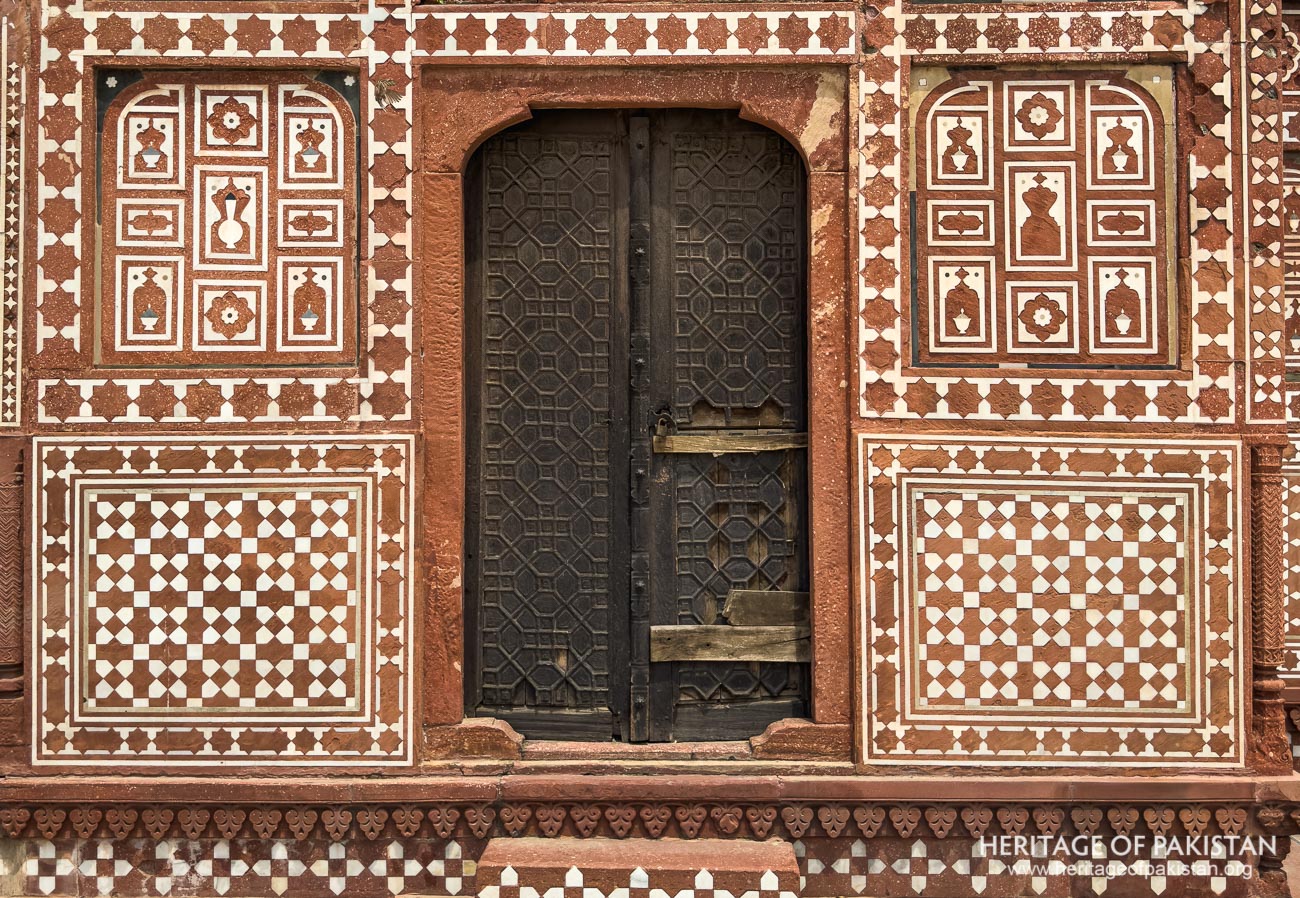 Marble Inlay work in Red Sandstone
Marble Inlay work in Red Sandstone
The tomb is a beautiful structure that reflects the artistic and architectural preferences of the Mughal era. It is a symbol of the grandeur and elegance that characterized the reign of Jahangir and his predecessors. The monument's design and construction demonstrate the Mughal's mastery of architecture and showcases the iconic redstone featured in various other Mughal monuments as well
The tomb of Jahangir is protected under the Antiquities Act of 1975. It is also on the tentative list of UNESCO World Heritage sites, highlighting its importance and the need for its preservation. The monument attracts numerous visitors and scholars who come to admire its beauty and learn about the history and culture of the Mughal era.
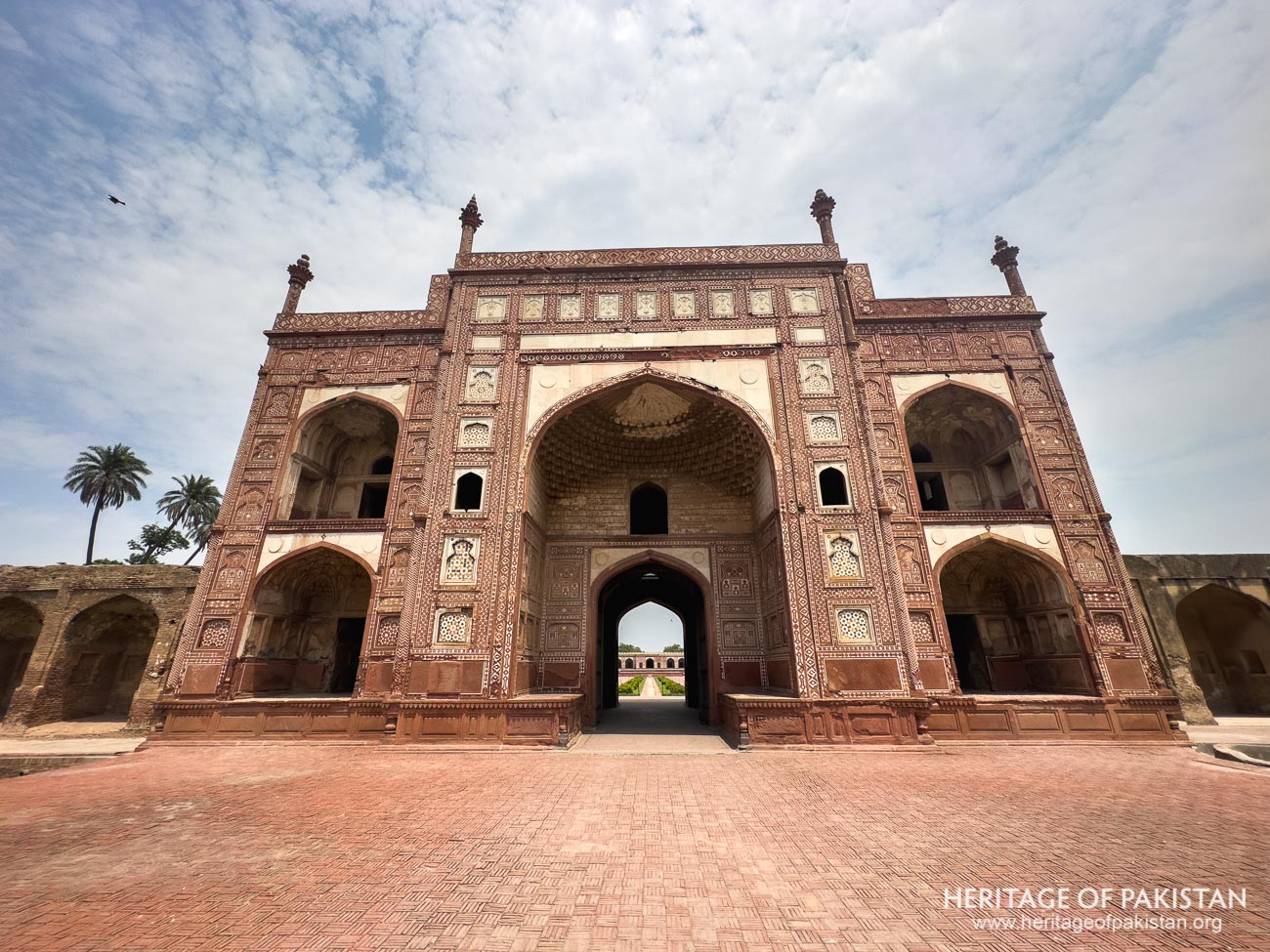 Entrance from Akbari Sarai to Jahangir's Tomb
Entrance from Akbari Sarai to Jahangir's Tomb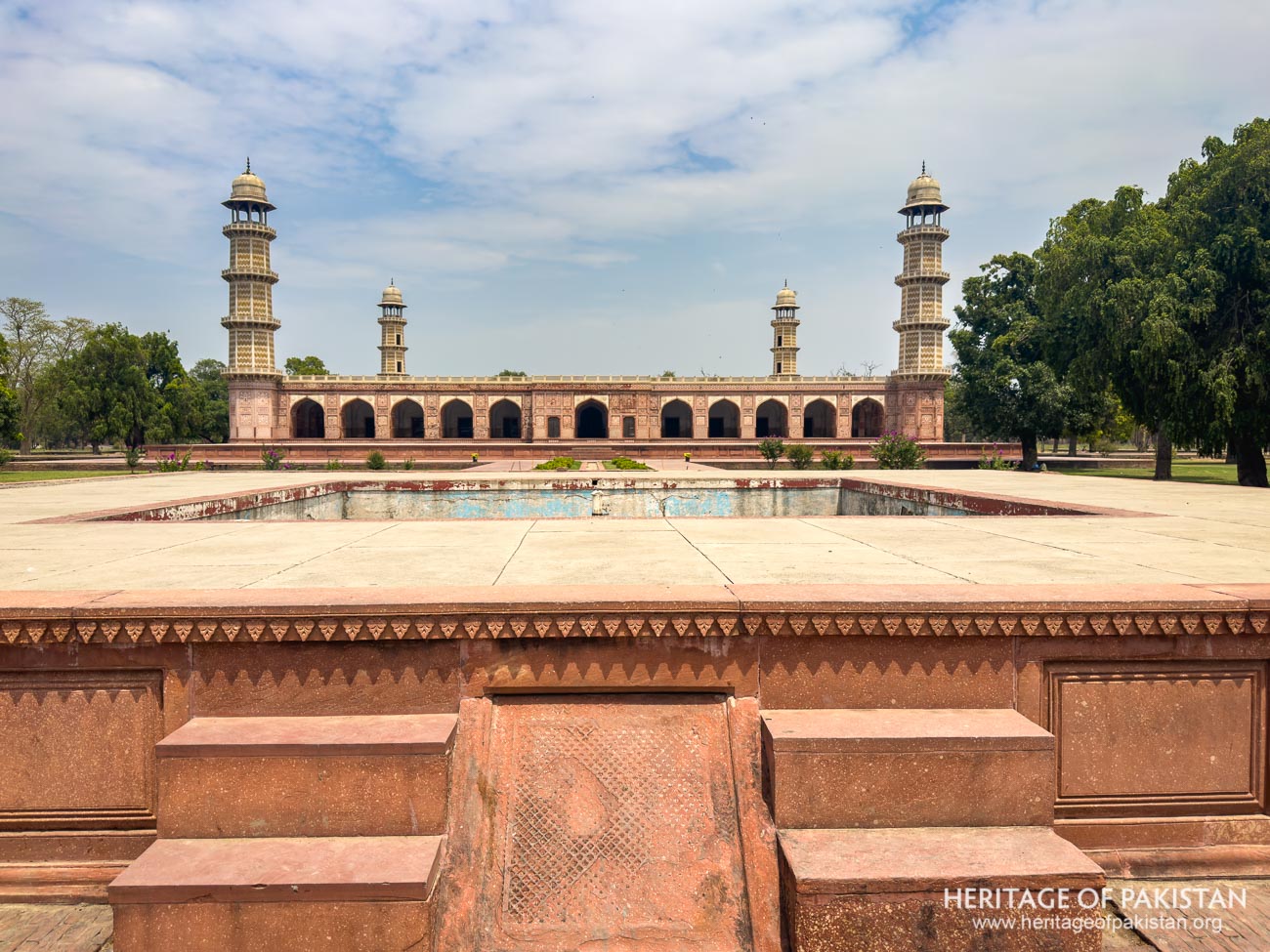
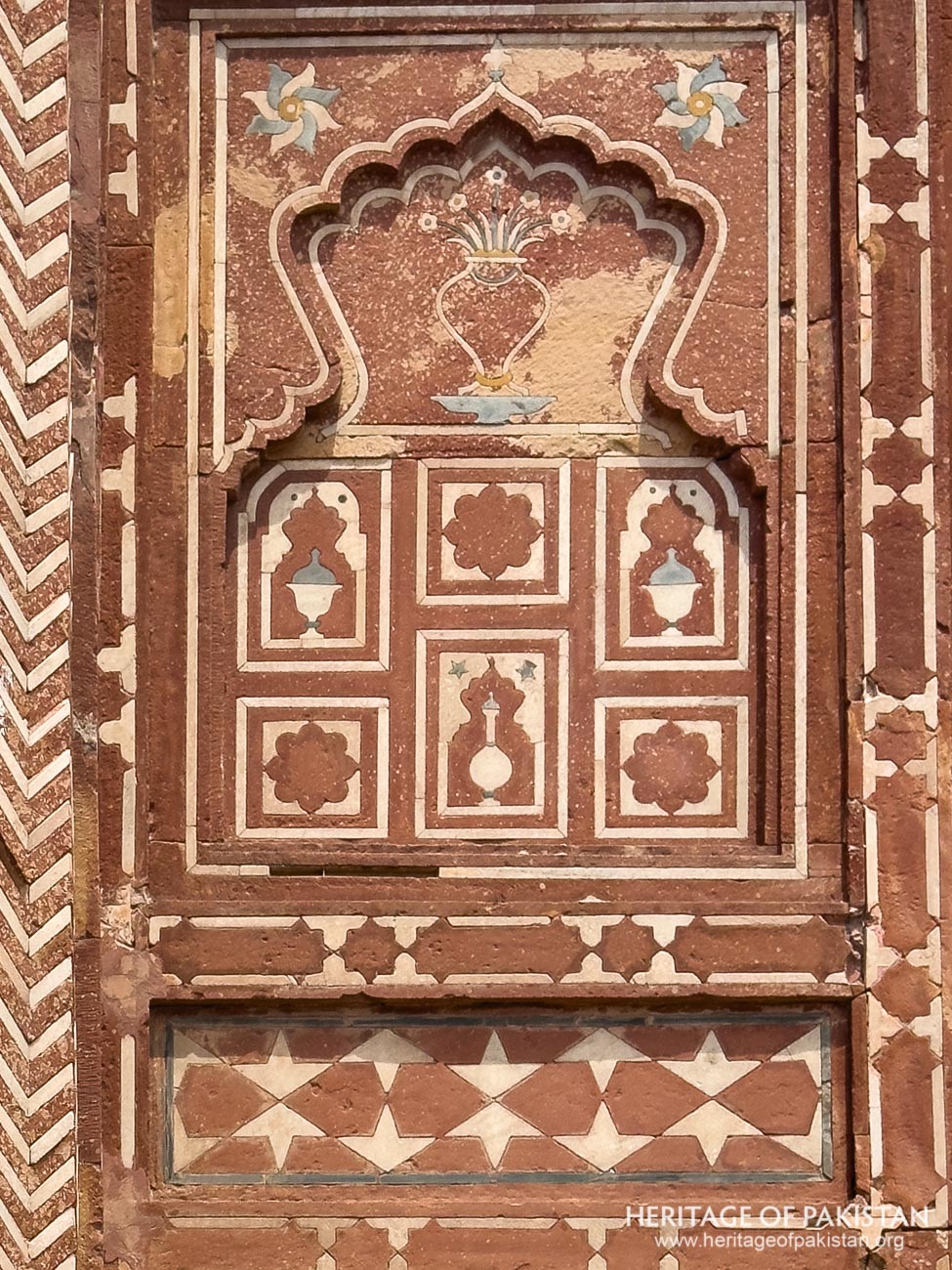
The Tomb of Jahangir in Lahore is a significant example of Mughal architecture and is known for its beautiful colorful design and beautiful garden. The red sandstone structure along with stone inlay creates a timeless combination. The tomb and the surrounding garden occupy a large area. The tomb and its garden are enclosed by a high brick wall with an imposing gateway on the western side, linking it to the Akbari Sarai. The garden, spread over an area of 28 hectares, is meticulously planned and divided into four main parts, each further subdivided into four sections, resulting in a total of sixteen segments. This design adheres to the traditional setting of a Chahar Bagh Rauza (paradisal garden mausoleum), emphasizing both form and function.
The divisions within the garden are highlighted using patterned walkways and water channels. At each intersection of these sections, a water tank with a beautiful fountain and water cascades has been provided, enhancing the aesthetic appeal. A fountain occupies the center of each of the chahar baghs and the avenues in between, creating a ring of eight fountains around the central tomb, adding to the tranquil and symmetrical design of the garden.
The mausoleum itself is square in plan, measuring 267 feet on each side and constructed on a high platform. The building is a single-storey structure with a flat roof, devoid of a dome, adhering to the wishes of Jahangir, who expressly forbade the construction of a dome over his tomb to maintain a compromise with Sunni tradition. The building's facade is a combination of red sandstone with white inlay, featuring various motifs, mostly ewers, fruit dishes, and rose-water sprinklers, which add to its visual richness.
The most striking feature of the tomb is its arcaded verandah of the inner sanctuary, which runs in front of a series of rooms. Four vaulted bays lead to the central burial chamber, which is octagonal in shape and approximately eight meters in diameter. This central chamber is connected to the outside of the tomb by four hallways facing the four cardinal directions. Surrounding the central chamber is a series of rooms, creating a layered and intricate interior layout.
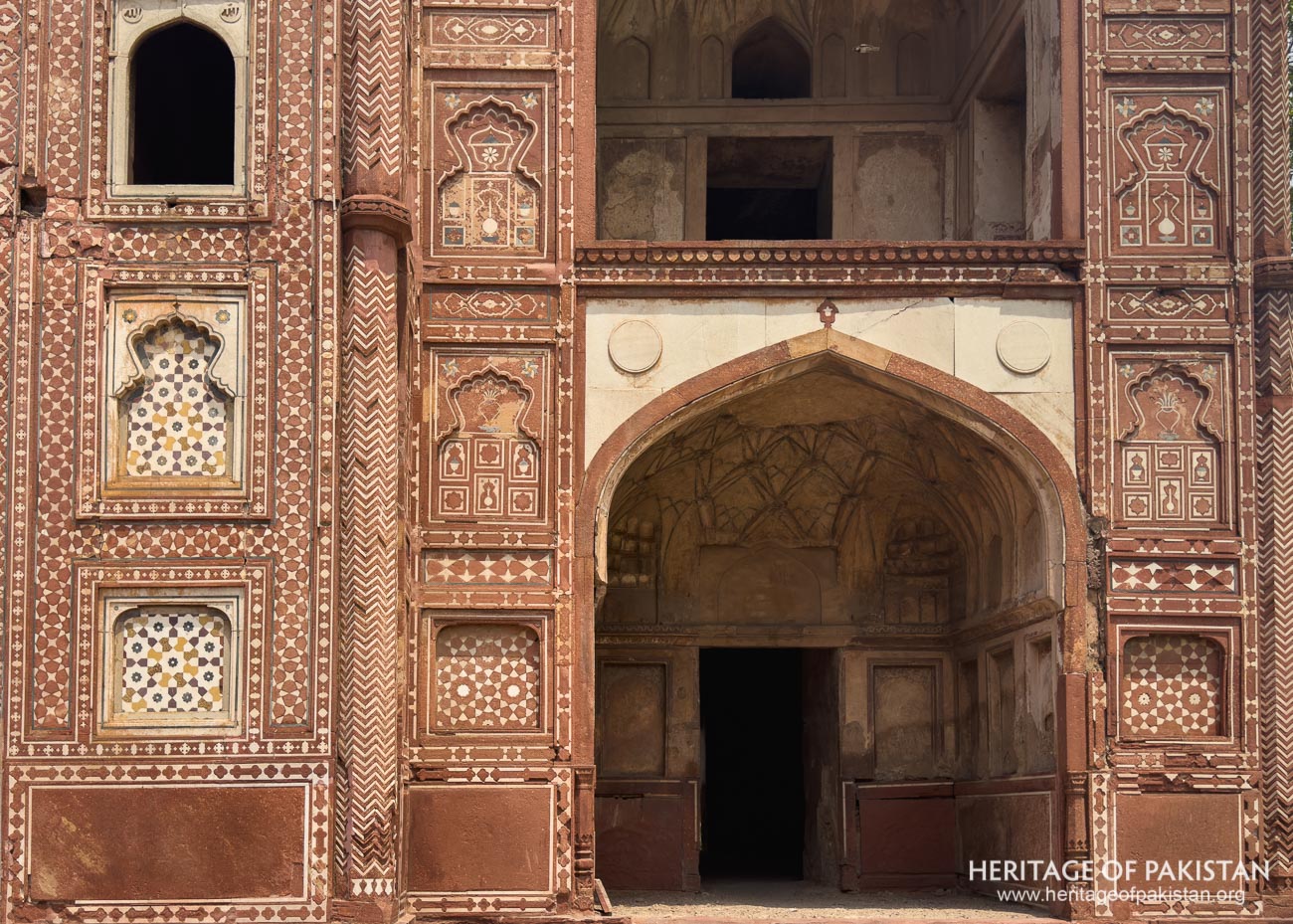

The burial chamber contains the marble tombstone of Emperor Jahangir, marking the grave underneath. The sarcophagus and the platform are intricately inlaid with semi-precious and precious stones, depicting floral patterns and the ninety-nine attributes of Allah. At the foot of the sarcophagus is an inscription in Persian, recording that "This is the illuminated grave of His Majesty, the Asylum of Pardon, Nooruddin Muhammad Jahangir Padshah 1037 AH." The bay leading to the grave is profusely ornamented with fresco paintings on the ceiling, showcasing the artistic skills of the period.
The interior of the tomb is embellished with floral frescoes, delicate inlay work (pietra dura or parchinkari), and brilliant marble intersia of various colors. The floor incorporates various stones such as Sang-e-Badal, Sang-e-Abri, and black and white marble, adding to the luxurious feel of the space. This intricate and detailed interior work reflects the high level of craftsmanship and artistic excellence achieved during Jahangir's reign.
Four octagonal minarets, each raised in four stages and crowned with cupolas, stand at each corner of the square structure. The three stages in the middle of each minaret are decorated with a horizontally laid zigzag design by inlaying white, yellow, and black marble, adding to the grandeur and visual complexity of the tomb.
The Tomb of Jahangir is part of a larger ensemble that includes the Tomb of Asif Khan, built in 1645, and the Akbari Sarai, built in 1637. These adjacent structures enhance the historical and architectural significance of the site. The tomb complex is currently on the tentative list for UNESCO World Heritage status, highlighting its importance as a cultural and historical landmark
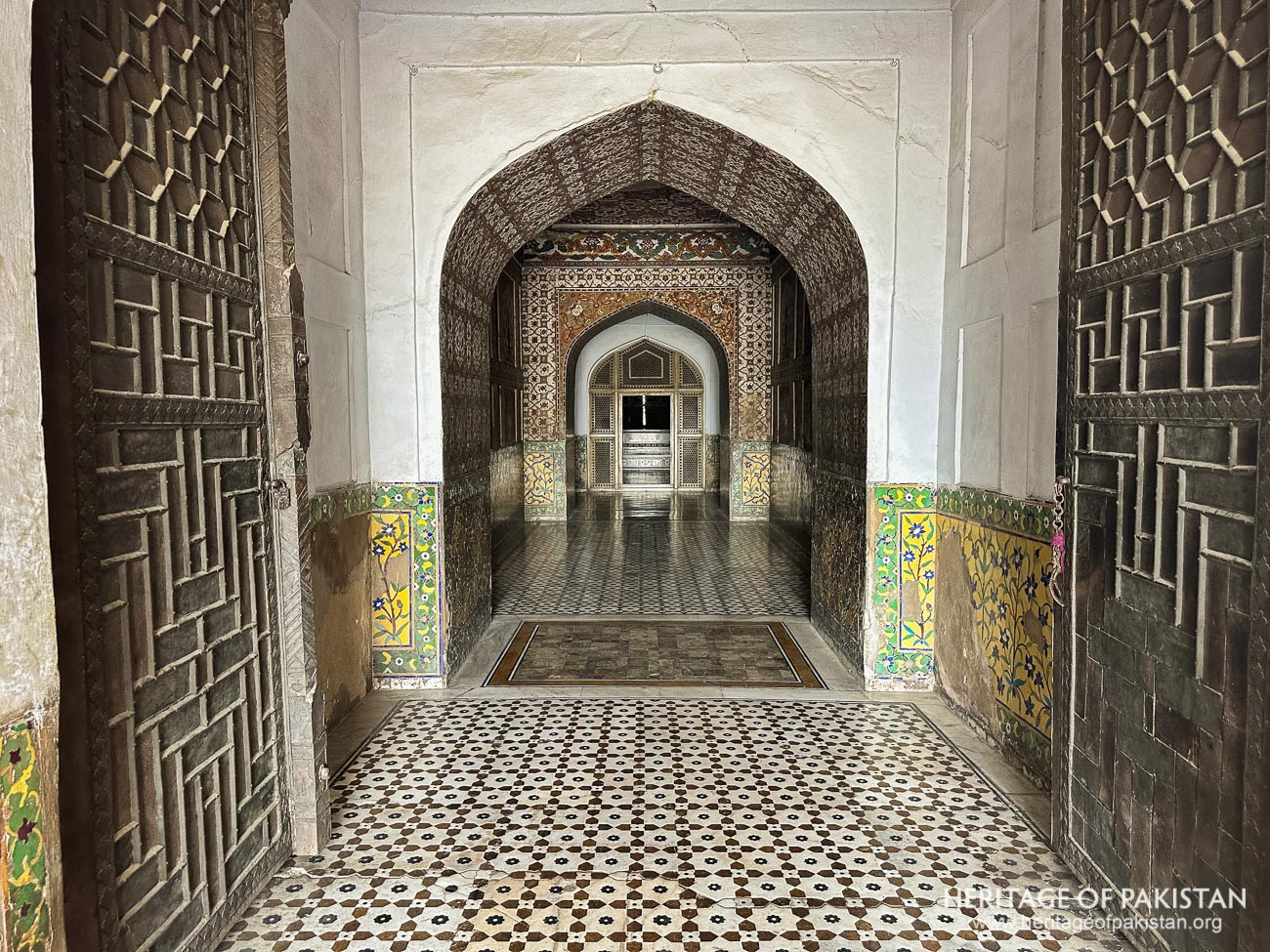
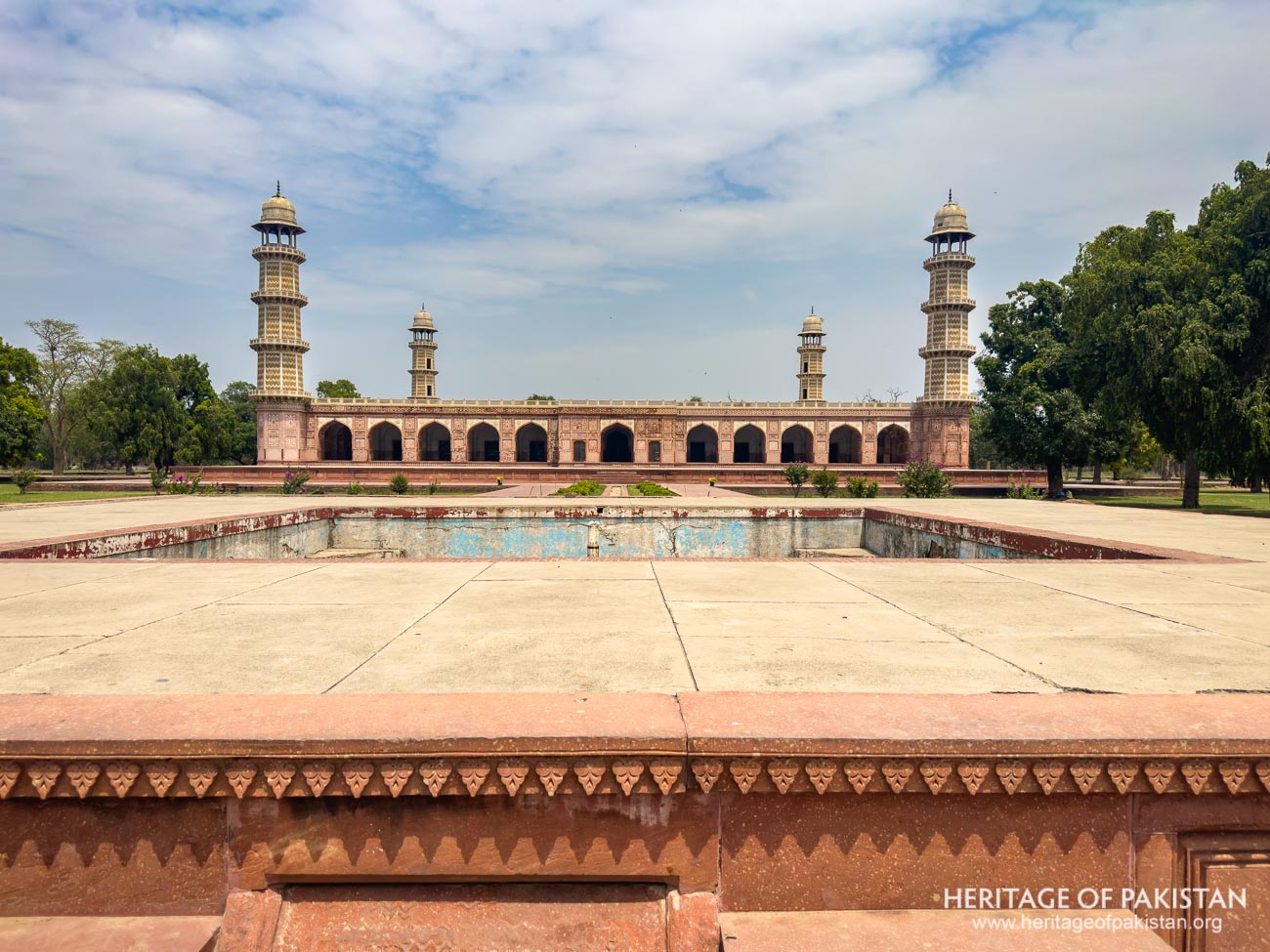
Discover the Jahangir's Tomb image gallery and immerse yourself in photographs

All Photographs by Syed Noor Hussain and Sania Azhar.
All Rights Reserved. Photos may be used for Non-Commercial, Educational, Artistic, Research, Non-Profit & Academic purposes.
Commercial uses require licensing agreement.


Add a review